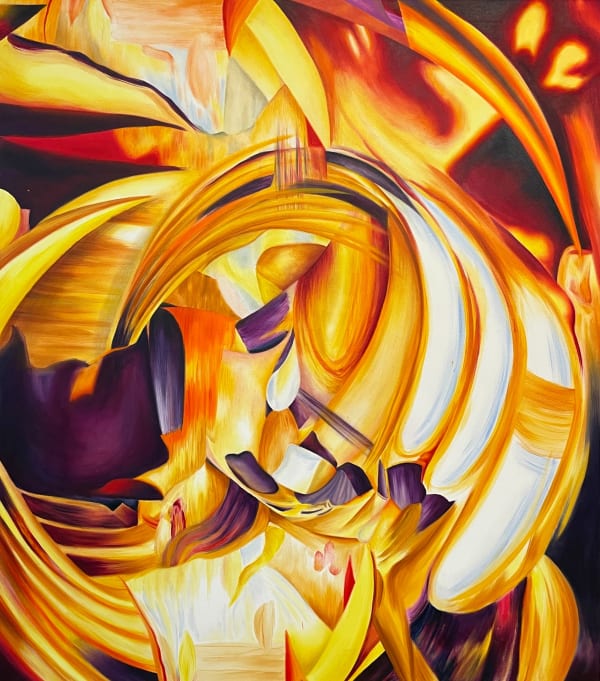I Saw All the Mirrors on Earth: Helen Bermingham
In Helen Bermingham’s paintings, the act of looking becomes an encounter with time itself. The artist’s process begins with fragments: digital collages composed from photographs of brushstrokes and painted marks drawn from previous paintings. These selected micro-compositions constitute the foundations for new paintings, creating a layered dialogue between past and present.
As paint is stratified, erased, and reapplied, these familiar forms are recreated and transformed, opening up new spaces of association. "By repeating brushstrokes I give them a different life, a potential new meaning," Bermingham reflects, drawing a parallel between the mutable nature of memory and the evolving language of Abstraction.
Each work is not a fixed statement but an unfolding narrative - what Bermingham describes as a “fictionscape” - where the echoes of past gestures collide with new possibilities. Just as each repeated brushstroke subtly shifts in form and meaning, so do our memories transform each time we recall them. Across her practice, this process of repetition becomes a kind of treasure hunt of mark making: a single fragment can be traced through previous works, its changes and evolutions forming a genealogy of gesture - a living repository of time and memory.
The title of the exhibition, ‘I Saw All the Mirrors on Earth’, references a line from Jorge Luis Borges’ short story ‘The Aleph’, in which the narrator encounters a single point in space that contains all others - a vision of infinite simultaneity where everything in the universe can be seen at once.
Borges writes, ‘I saw all the mirrors on earth and none of them reflected me’, encapsulating the paradox of perceiving everything while losing oneself in the process. Bermingham’s paintings operate in a similar realm of multiplicity: each image contains many others, each mark is turned into a point of shifting variation and possibility. Like the mirrors in Borges’ universe, her surfaces reflect what has come before, offering versions of reality that are always partial and in flux. Within this context, the painting process itself becomes a conversation - between the considered structure of the initial digital collage, the intuitive, unanticipated marks that emerge through working, and the thoughts and memories that surface along the way.









